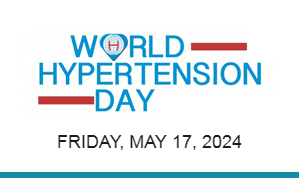20th European Meeting on Hypertension
Monday, 21st June – Intensive blood pressure (BP) control did not reduce the rate of a composite outcome of major cardiovascular (CV) events in high-risk patients with type 2 diabetes mellitus (DM), according to the Action to Control Cardiovascular Risk in Diabetes (ACCORD; NCT00000620) BP Trial. However, intensive BP control correlated with reductions in the rate of total stroke and nonfatal stroke. Richard H. Grimm, MD, PhD, Berman Center for Clinical Research, Minneapolis, MN, presented new findings from the ACCORD BP Trial at the European Society of Hypertension Annual Meeting in Oslo, Norway.
The ACCORD BP Trial included 4733 patients with stable type 2 DM > 3 months (average duration 10 years) who were considered to be at high risk for CVD (defined as clinical or subclinical disease or ≥ 2 CV risk factors, in addition to DM). Patients were randomized to receive either intensive therapy (n=2362) (initial 2-drug therapy of thiazide-type diuretic plus an angiotensin-converting enzyme inhibitor [ACEI], an angiotensin receptor blocker [ARB], or a β-blocker was recommended with drugs added or titrated at each visit in order to achieve a systolic BP of <120 mm Hg) or standard therapy (n=2371) (where therapy was modified based on BP readings in an effort to acheive target BP). The target systolic BP for the intensive therapy group was <120 mm Hg versus <140 mm Hg for the standard therapy group.
The primary outcome was the first occurrence of a major CV event (defined as nonfatal myocardial infarction [MI], nonfatal stroke, or CV death). Secondary outcomes included an expanded macrovascular outcome (defined as a combination of the primary outcome plus revascularization or hospitalization for congestive heart failure), major coronary disease events (defined as a combination of a fatal coronary event, a nonfatal MI, or unstable angina), hospitalization or death due to heart failure, all stroke, death from any cause, or death from CV causes.
The rate of serious adverse events, although infrequent, was significantly higher in those who were treated with intensive therapy compared with those who received standard therapy (3.3% vs 1.3%, respectively; p<0.0001). One year from study end, the mean systolic BP averaged 119.3 mm Hg versus 133.5 mm Hg for intensive and standard groups, respectively, amounting to a difference of 14.2 mm Hg.
The annual rate of the composite of fatal and nonfatal CV events was similar in both groups (1.87% vs 2.09% per year for standard therapy; p=0.20). There was no difference in death from any cause between the two groups.
Interestingly, the prespecified secondary outcomes of total stroke (p=0.01) and nonfatal stroke (p=0.03) were lower in the intensive therapy group. Based on these findings, the number needed to treat to lower systolic BP in order to prevent one stroke over 5 years would be 88. Interactions were also observed related to stroke rates and age (interaction p=0.13), CVD history (interaction p=0.94), baseline hemoglobin A1c (interaction p=0.008), and baseline diastolic BP (interaction p=0.10).
These results failed to demonstrate that lower target systolic BP (<120 mm Hg), through the use of intensive therapy, reduces the rate of fatal and nonfatal CV events (composite primary endpoint) in high-risk patients with type 2 DM. However, interesting data emerged regarding the secondary endpoints of total stroke and nonfatal stroke. These stroke related interactions merit further evaluation.
Further Reading:
The ACCORD Study Group. N Engl J Med 2010; published online ahead of print March 14, 2010.





